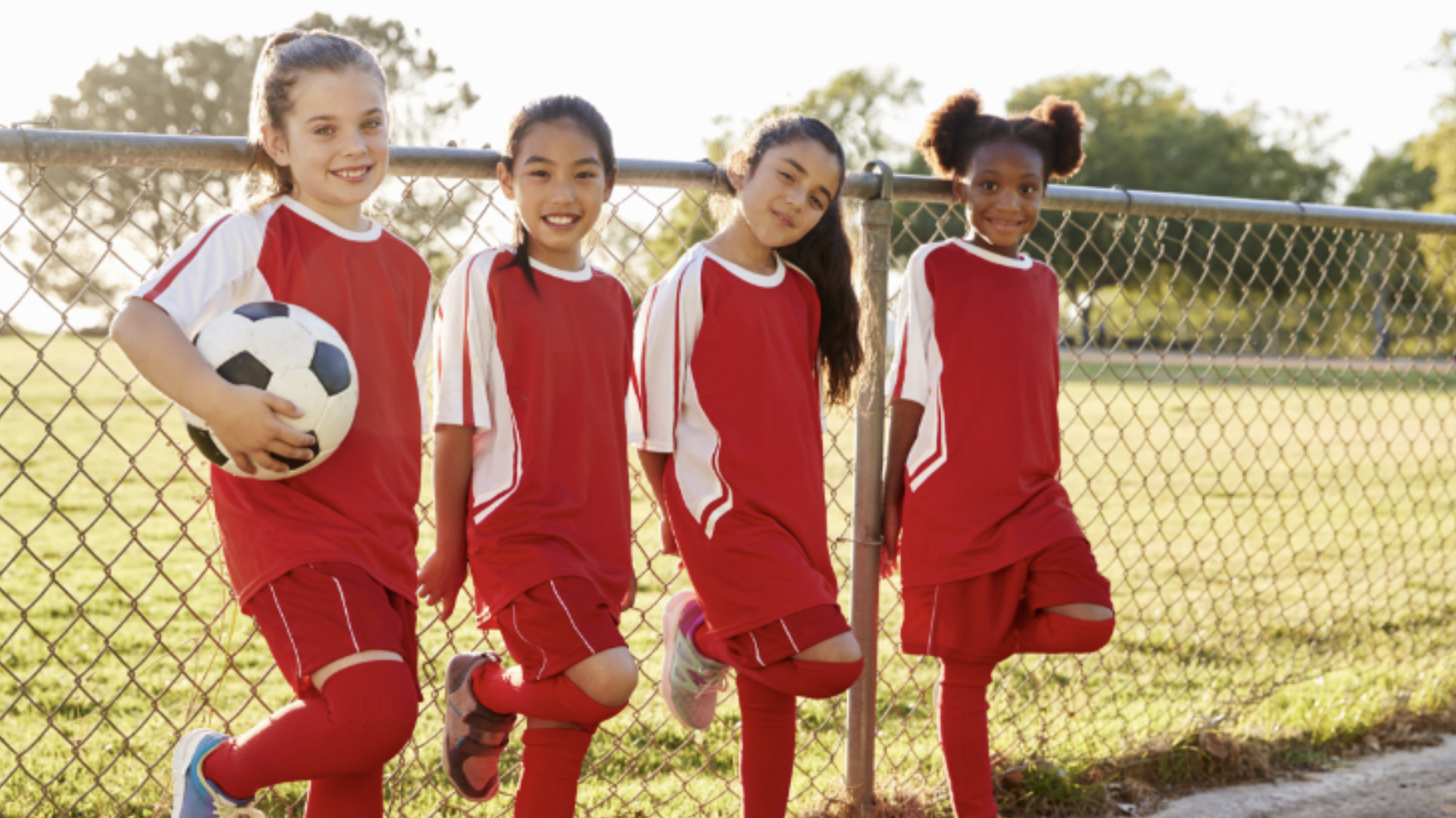Originally published on EricaSuter.com
Follow Erica Suter: Twitter | Instagram
Order ‘The Strong Female Athlete‘ Book on Amazon
To better understand why young female athletes (ages 8-12) shouldn’t be rushed into advanced movements and speed programs like the pros, adults need to be educated on proper human development, growth, and maturation. This is something that needs to be taken seriously for the physical and mental health of the child.
Let’s dive in.
The Stages of Youth Female Athletic Development
Everything comes in stages. Everything comes with time. Everything is a process that isn’t too be rushed, otherwise we fight nature, and then it comes roaring back with vengeance. Nature always wins. It’s smart. It’s relentless. It’s on its own schedule. Whether you like it or not, you have to suck it up and be patient.
A caterpillar doesn’t turn into a butterfly right away.
A flower doesn’t bloom in a day.
A child doesn’t walk straight away.
A kindergartner doesn’t learn calculus.
An elementary school child doesn’t write a dissertation without learning the ABCs first.
When we look at the stages of formal education, we do a great job of staying on track with academic progression appropriate to the age of the child. We do a great job taking cognitive development into account and meeting their brains where they are in their maturation. We learn addition and subtraction, then multiplication and division before moving onto complex equations. We also learn the alphabet, then words, then conjunctions, before writing essays and dissertations.
At a young age, there’s a reason we do coloring books and not physics equations.
Education has figured out the stages of development way better than sports.
Your Young Daughter Isn’t a Pro
Why don’t we do the same for physical and athletic skills development? Why don’t we align a training curriculum with age and readiness? Why are we so quick to rush kids into specialized sports, onto travel teams, too much instruction with speed gurus, and into advanced speed training programs so young? Why do we want them to train like professionals? Why do people treat them like mini adults? Why do we ignore the emotional needs of a young one who craves play? Why do we force overcoaching on kids? Why do we enroll kids with trainer Joe who has them doing box jumps at age 10? Why do we ignore kids’ physical malleability and their need to build multiple muscle groups through movement variety?
The model for long-term athletic development should be the framework everyone adopts because it looks after the emotional and physical development of the child. It encompasses starting with the fundamental movement skills, then graduating onto movement patterns, then to strength and deceleration, power and speed with more objective measurements as full maturity is reached. There is so much work that needs to be accomplished over a long period of time (several years or the length of the youth athlete’s career) so they can optimize their performance and long-term health. All adults must understand child development as well as learn all facets that encompass it: anatomy, physiology, growth, and maturation. It should be common sense that an 8-year-old will have vastly different training than a 23-year-old pro.
Keep The Ages Separate
I once had a dad want to put his girls all in the same session, even though they were at completely different stages in their development. Of course, I understand the dad wanted to keep the siblings together to save a commute, but I wasn’t going to cave. This is because the 14-year-old was much more ready to do loaded resistance training and coached up mechanics drills, and if she would’ve trained with the 8-year-old, she would’ve been held back. And from the 8-year-olds perspective, she would’ve gotten bored with structured technique coaching in the gym because where she was at emotionally, she needed play and fun.
So no, I will not tell an 8-12 year-old: “here’s how to decelerate, change direction, have a soft knee bend, low stance, go this way, go that way, do this, do that…” This totally dis-engages them.
Instead, I’m going to let the environment provide the physiological impact we want to achieve. Kids need to be given the opportunity to problem solve and self orient. They’re smart and we need to give them credit.
The best deceleration, body control and agility is this game below, where we tell offensive players to run through as many open doors as possible, while the other defends and blocks.
This has an incredibly potent transfer to soccer, which is a game of spontaneous decisions.
Athletic development must be in stages. It is a journey, slowly progressing over the years from elementary school to college and beyond. It’s a process that involves mastery of the basics, then new stimuli to achieve strength, power and speed adaptations. My high school girls do the most advanced movements. When I post what they do on social media, it makes everyone “ooh” and “ahh.” Their exercise reels are the ones that go the most viral. But what parents of young ones don’t know, is underneath the cool movements they see from my older girls, were YEARS of building a broad foundation of athletic skills through fun games, movement variety, sport sampling, and PLAY. They earned those advanced movements. They weren’t given them.
Here’s a summary of my three stages I’ve done over 12 years of coaching:
Play Phase (8-12) – pre-growth spurt, building brain neural pathways at apex, fun speed and agility, variety of movement through small sided games, little to no instruction (games elicit physiological result we want. Example: for sprint speed, and a higher knee drive for mechanics, we do a fun “wickets” game called Rail Road tracks, where girls race against one another and they have to sprint over mini sticks without hitting them…this encourages a big knee drive and better foot strike without any boring instruction!)
Performance Phase (12.5-14) – growth spurt, weight changes, bone length changes, fun speed and agility, add instructional resistance training with progress tracking, (Example: how to perform a hinge so they can safely load with weights and build their muscles)
Competition Phase (14.5+) – post growth spurt, almost full maturation, advanced speed and acceleration, structured mechanics drills, speed timing system tracking, jump mat tracking, most instruction. Example: mechanics drills with focus on ball of foot strike and knee drive:
Then move onto wickets to apply:
(Keep in mind…this is a general template I use for each stage, but maturation status, both physically and emotionally, comes into play, too).
Physical development is a process that requires patience. If you want to be expedient about it, then go ahead. But realize, it comes at a price and you risk injury for the child, as well as them hitting a performance wall when they reach adolescence.
Physical development is a process that requires patience. If you want to be expedient about it, then go ahead. But realize, it comes at a price and you risk injury for the child
This is a process that very few stick with for the long haul, but the ones who do, blossom into powerful, healthy, robust, and disciplined athletes for sports and life.
For more research, get THE STRONG FEMALE ATHLETE book:
Check out my video on The Stages of Female Athlete Physical Development:
Work with me on speed and agility training in Tampa, Florida for the appropriate age and level of your athlete. Book an initial session HERE
About The Author:
Erica Suter is a former college 3x All-American soccer player from Johns Hopkins University. She is giving back to the game and to female soccer players as a full-time performance coach. She holds a Master of Science in Exercise Science and has been helping girls with speed, agility, strength, and conditioning for over 12 years in the ECNL, GA, and NPL.
Her players have gone on to play college soccer at UNC, University of Maryland, Pittsburgh, Towson University, University of Charleston, MIT, Johns Hopkins, Carnegie Mellon, Rutgers, and more. (Website: ericasuter.com)









